#yōkai manga
Text

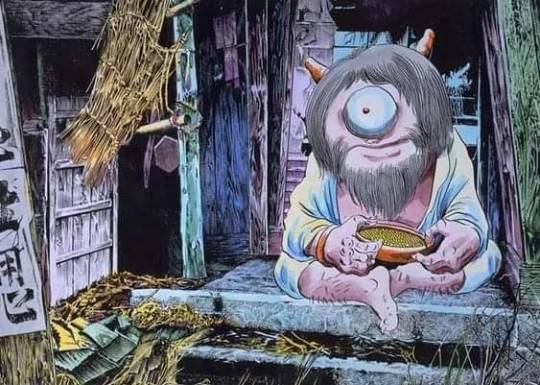


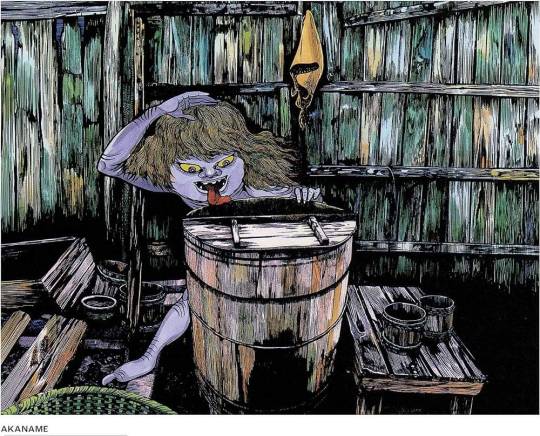





Shigeru Mura (Japanese: 武良 茂, Hepburn: Mura Shigeru, March 8, 1922 – November 30, 2015), also known as Shigeru Mizuki (水木 しげる, Mizuki Shigeru), was a Japanese manga artist and historian. He was known for his yōkai manga such as GeGeGe no Kitarō and Akuma-kun, as well as for his war stories based on his own war manga such as Shōwa-shi.
He was born in Osaka, grew up in Sakaiminato, Tottori, then moved to Chōfu, Tokyo, where he remained until his death. His pen-name, Mizuki, comes from the time when he managed an inn called 'Mizuki Manor' while he drew pictures for kamishibai.
#mizuki shigeru#mangaka#manga#japanese folklore#yōkai#japanese manga artist#yōkai manga#japanese historian
12 notes
·
View notes
Text

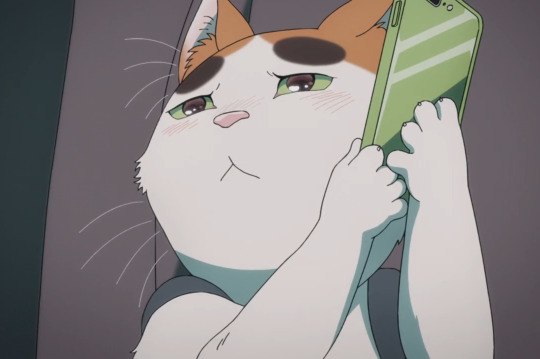

Tonari no Yokai-san - Episode 12
#Tonari no Yokai-san#yokai#animation#cat#anime#cats#cats in anime#kittens#anime cat#anime neko#cat in anime#neko#cats of tumblr#cute cats#kitty#kitties#pets#nekomata#Buchio#animals#The Yōkai Next to Me#となりの妖怪さん#black cat#anime art#anime and manga#scared cat
34 notes
·
View notes
Text
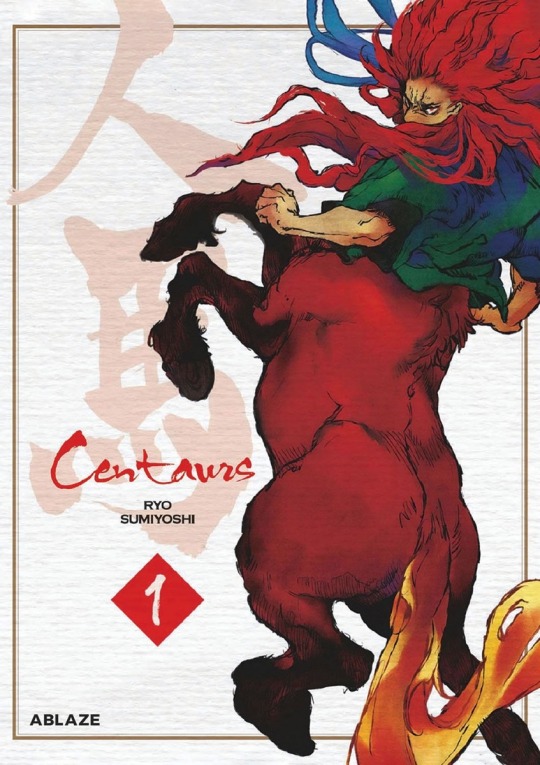
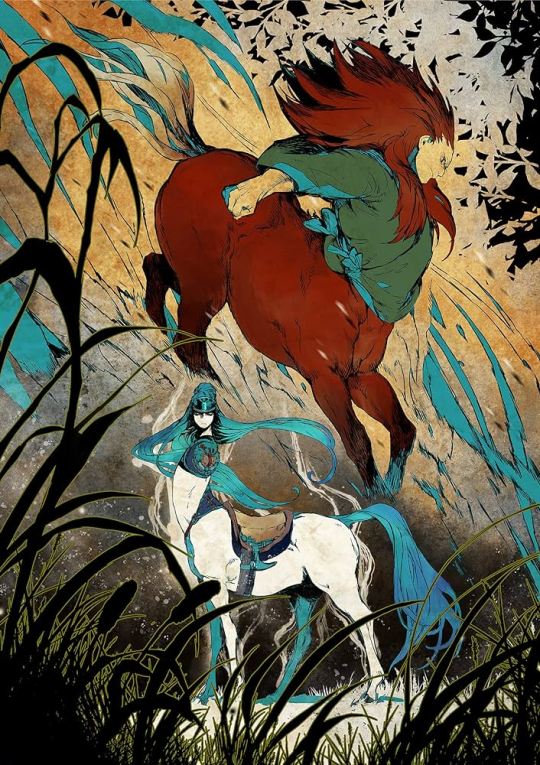
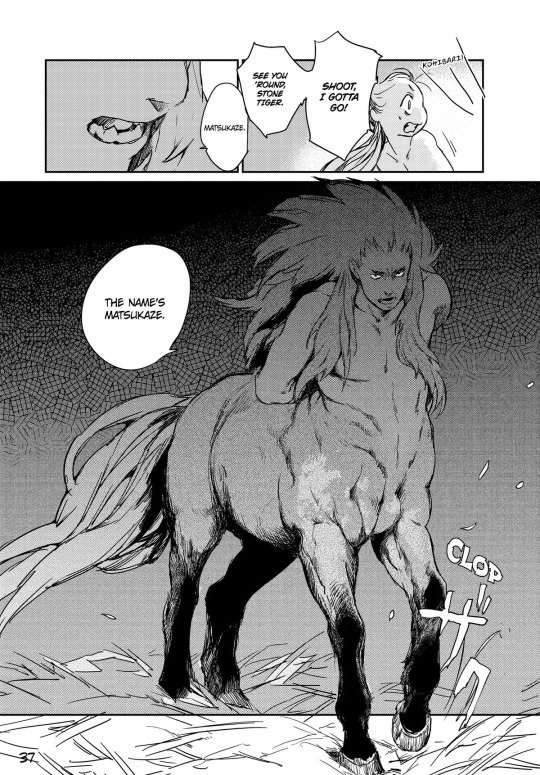

So I accidentally stumbled upon this manga called "Centaurs" (Jimba) by Ryo Sumiyoshi, and I already highly recommend it. It takes place in feudal era Japan and it's feels all around. Later volumes coming this year.
#Centaurs manga#jimba manga#ryo sumiyoshi#manga recs#manga recommendation#monsters#feudal japan#yōkai#mythical creatures
15 notes
·
View notes
Text
NEW LIAOZHAI ZHIYI • THE WOMAN SPIDER BY OSAMU TEZUKA

Included in several of his anthologies, but also in Kaiki Gensou Horror Manga Kessakushuu.
#horror manga#horror#vintage manga#shounen manga#Jorougumo#Liaozhai#Liaozhai Zhiyi#manga#osamu tezuka#tezuka osamu#Spider#golden orb weaver#spider web#blue#dark blue#yellow and blue#Yokai#Yōkai#folklore
4 notes
·
View notes
Text

GeGeGe no Kitarō: Yōkai Dai Gekisen (2008) - Nintendo DS
#GeGeGe no Kitarō#ゲゲゲの鬼太郎#Ittan-Momen#一反木綿#Shigeru Mizuki#水木 しげる#GeGeGe no Kitarō: Yōkai Dai Gekisen#Nintendo DS#Yōkai#Japanese folklore#Horror#Vintage#Manga#Anime
6 notes
·
View notes
Photo
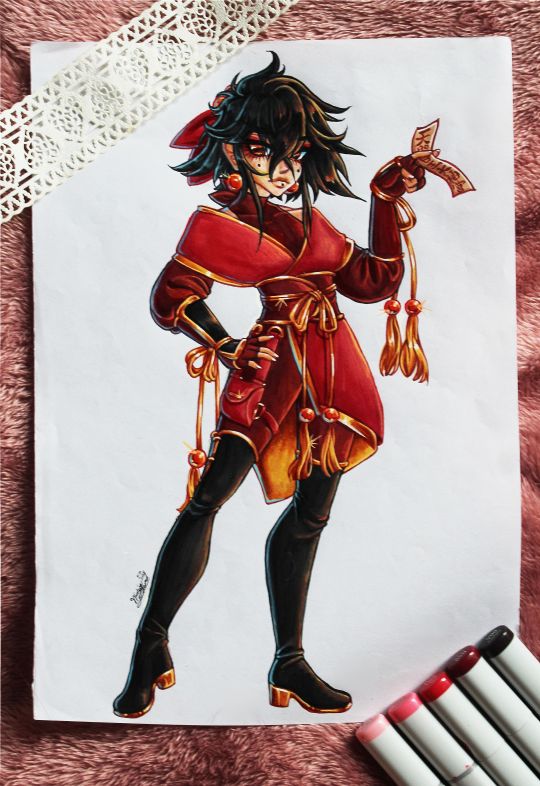
The lil’ yōkai girl from yesterday has a lil’ exorcist girlfriend! <3
I definetily was inspired by Moroha’s color scheme when drawing this character design, I just adore red, gold and black together hehehehe
Also don’t judge my terrible talisman writing, I did my best ;_;
#anime#art#manga#drawing#traditional art#traditional drawing#anime manga#manga anime#exorcist#yokai#Yōkai#demon hunter#character design#oc#original character#fantasy#copic#copic markers#illustration
20 notes
·
View notes
Text
It's Time For A Supernatural Adventure with Akuma-Kun! Coming Up In 2023
It's Time For A Supernatural Adventure with Akuma-Kun! Coming Up In 2023
#anime #AkumaKun #悪魔くん #manga
Fans of Shigeru Mizuki rejoice. I have some great news for you! Shigeru Mizuki’s beloved Yōkai Manga series Akuma-Kun will be getting a brand-new series, and it’s coming in 2023.
In this new announcement, Netflix released a new teaser trailer, a new visual, a staff list, and several new cast members for the upcoming series. Here are the staff and cast members that have been…

View On WordPress
#Akuma-Kun#Anime#GeGeGe no Kitarō#Manga#Netflix#Shigeru Mizuki#Supernatural Shōnen#Toei Animation#Yōkai#悪魔くん
5 notes
·
View notes
Text

ELEGANT YOKAI APARTMENT LIFE VOLUME 9
2 notes
·
View notes
Text
SPOILERS: Chapter 1094 of ONE PIECE
We've finally seen St. Jaygarcia Saturn's real form on chapter 1094, and it is absolutely diabolical. It seems to be inspired by a yōkai called Ushi-oni. So I went back to chapter 1085 and tried to connect the rest of the Gorosei with other yōkai. Here are my predictions:

Ushi-oni: In Wakayama Prefecture, ushi-oni are mountain-dwelling beasts. Legend says when a hiker or traveler makes eye contact with the ushi-oni, the person cannot avert his or her gaze. The person's soul or energy is drained and he or she dies. This is called “Kage wo kuu (影を食う)” or sometimes "Kage wo nomu (影を飲む)", which translates to “eating the shadow” or "drinking the soul".
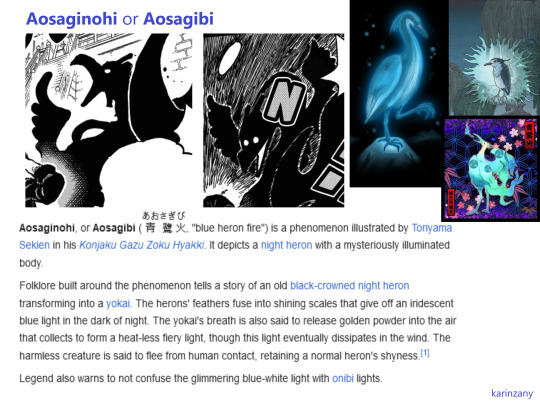
Aosaginohi: Aosaginohi, or Aosagibi (青(あお)鷺(さぎ)火(び), "blue heron fire") is a phenomenon illustrated by Toriyama Sekien in his Konjaku Gazu Zoku Hyakki. It depicts a night heron with a mysteriously illuminated body. Folklore built around the phenomenon tells a story of an old black-crowned night heron transforming into a yokai. The herons' feathers fuse into shining scales that give off an iridescent blue light in the dark of night. The yokai's breath is also said to release golden powder into the air that collects to form a heat-less fiery light, though this light eventually dissipates in the wind. The harmless creature is said to flee from human contact, retaining a normal heron's shyness. Legend also warns to not confuse the glimmering blue-white light with onibi lights.
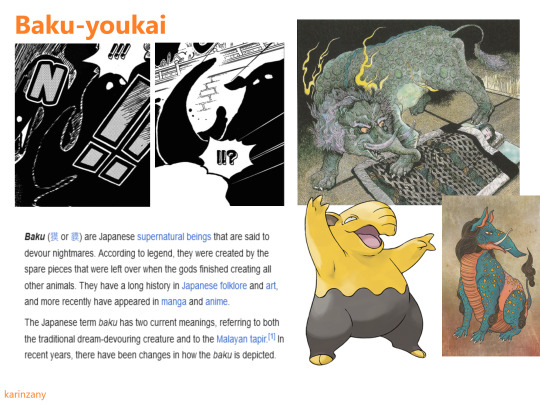
Baku: Baku (獏 or 貘) are Japanese supernatural beings that are said to devour nightmares. According to legend, they were created by the spare pieces that were left over when the gods finished creating all other animals. They have a long history in Japanese folklore and art, and more recently have appeared in manga and anime. The Japanese term baku has two current meanings, referring to both the traditional dream-devouring creature and to the Malayan tapir. In recent years, there have been changes in how the baku is depicted.

Benzaiten: Benzaiten (shinjitai: 弁才天 or 弁財天; kyūjitai: 辯才天, 辨才天, or 辨財天, lit. "goddess of eloquence"), also simply known as Benten (shinjitai: 弁天; kyūjitai: 辯天 / 辨天), is a Japanese Buddhist goddess who originated mainly from Saraswati, the Hindu goddess of speech, the arts, and learning, with certain traits deriving from the warrior goddess Durga. Due to her status as a water deity, she was also linked with nāgas, dragons, and snakes. Apart from being a patron of music and the arts, she was eventually also worshiped as a bestower of monetary fortune and was reckoned as one of the Seven Lucky Gods (Shichifukujin).

Ōkubi: In Japanese folklore, Ōkubi (大首) are giant heads of either men or women. An Ōkubi appearing in the sky is a sign of impending disaster, which may be a typhoon, earthquake, tsunami, or fire. These disasters are often attributed to the Ōkubi. Ōkubi are otherwise harmless and will disappear soon after the first sighting. They are thought to be sky spirits who protect the sky's or people who died during a natural disaster. They are said to protect people from the natural disasters and protect the sky from demonic sky spirits. It is said if one does not pay respect for the Ōkubi, they will be turned into sky spirits and their face will appear in the sky immediately. Those who do pay respect are said to get good fortune and gifts.
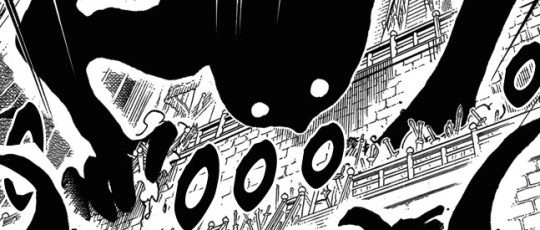
PS.: This silhouette probably belongs to Imu themselves, but I can't figure out what yōkai or supernatural being it represents. What are your theories?
EDIT: Thank you @ozo-blog and @marimo-kyun for your suggestion!

On chapter 1069, Vegapunk said that Devil Fruits earned the ire of Mother Nature, which is the Sea itself. The name Imu can be read as Umi backwards, meaning "Sea" in Japanese. So, maybe Imu has a power that controls the sea? Umibozu would be on theme for them.
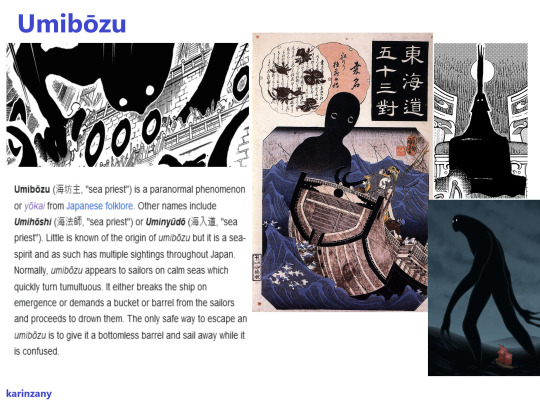
Umibōzu: Umibōzu (海坊主, "sea priest") is a paranormal phenomenon or yōkai from Japanese folklore. Other names include Umihōshi (海法師, "sea priest") or Uminyūdō (海入道, "sea priest"). Little is known of the origin of umibōzu but it is a sea-spirit and as such has multiple sightings throughout Japan. Normally, umibōzu appears to sailors on calm seas which quickly turn tumultuous. It either breaks the ship on emergence or demands a bucket or barrel from the sailors and proceeds to drown them. The only safe way to escape an umibōzu is to give it a bottomless barrel and sail away while it is confused.
Alternative: I've also seen another theory that says Imu could be Satan (from the Bible, yes) because he has a Red Dragon form that could relate to the Celestial Dragon's symbol, a red dragon hoof.

Red Dragon (Biblical Satan): The Red Dragon is a form of the Biblical Satan, otherwise known as Lucifer, the former Seraphim that rebelled against the Creator and became evil in Christianity and Hebrew religions. His alias, the Red Dragon, was described in the Bible to have seven heads, ten horns, seven crowns, and a massive tail that knocks one-third of the stars out of the sky. The Red Dragon is mentioned to have other names like the Serpent of Old and the Devil. It is said in the Bible that Satan will take the form of the Red Dragon and will along with the Antichrist, the False Prophet, and the Beast, deceive most of Humanity. After that the Red Dragon will be set free upon the world in which he will rule alongside demons for three long years. After that God will cast the Red Dragon, demons, and other dammed evil souls into Lake of Fire, thus finally destroying the evil of Satan forever.
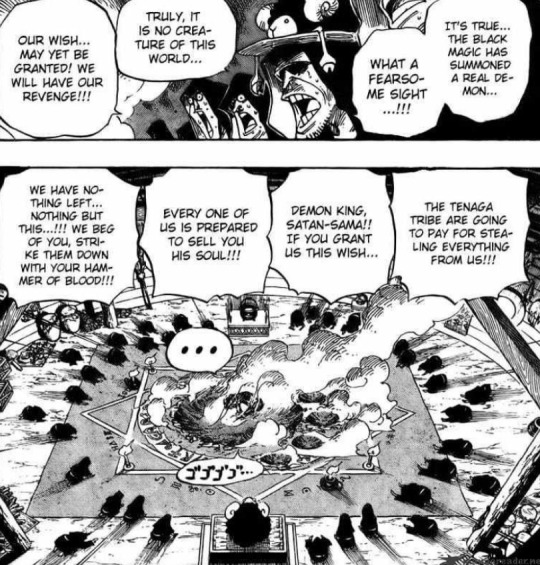

During the time-skip, we've seen Brook being accidentally summoned by a Satanic cult, which implies the existence of Satan in the One Piece world. Now, on chapter 1094, we've seen again a summoning circle, this time for St. Jaygarcia Saturn. I think it's pretty obvious the connection between real world devils and the Gorosei and Imu.
It's all going to come to the ironic conclusion that the D. clan, the enemies of the Gods, are Gods themselves (like Nika) and the Celestial Dragons, the Gods of the world, are actual Devils.
#one piece#jaygarcia saturn#1094#one piece spoilers#op spoilers#opspoilers#egghead#egghead arc#gorosei#1085#one piece chapter 1094#honestly the one i'm most certain about is aosagibi the blue heron#the other ones are very difficult to understand#one piece theory#one piece 1094#one piece 1085#im sama#imu sama#nerona imu#my post
514 notes
·
View notes
Text
Backbeard - Day 61
Race: Foul
Alignment: Dark-Chaos
July 1st, 2024
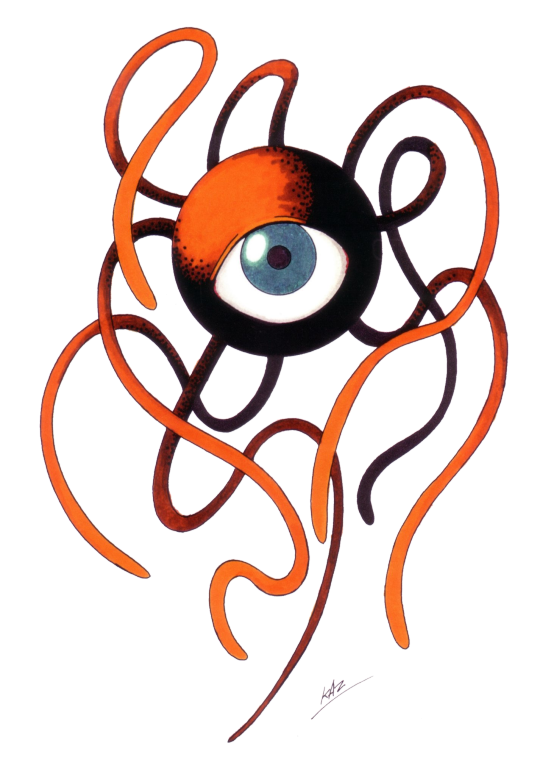
ZEHAHAHA- wait, no L. Unfortunate. Today's Demon of the Day is, strangely, a modern version of a classic type of monster, and one that originates from a very specific source- a manga. Yep, we have another one that leads you in circles in research, though in this case, it's because it might not even exist. Enter Backbeard, a yōkai that originates from GeGeGe no Kitaro. Before I start digging into what little there is to offer, I'd like to give a huge thank you to @kanekocribs 's fantastic post about this subject, which also had a great delve into Porewit, which you all know my very... intense feelings about.
For the most part, Backbeard's origin is incredibly hard to trace; the purported origin of the yōkai in the book "100 Ghosts and Hauntings of the World" seems to have just been made up by the SMT fandom wiki, as the closest thing I can even trace to that name is the series of woodblock prints from the 1830's called "One Hundred Ghost Stories" which can be further traced back to a set of parlor games called "Hyakumonogatari Kaidankai." In these sources, though, I can't find any reference to Backbeard or even just a single-eyed entity, which appears to be the primary trait for a lot of depictions. Even going back and trying to find anything related to an August 1965 edition of Shonen Book, which the wiki page cites...
Sends you right back to GeGeGe no Kitaro. Please get some sources cited Megaten wiki. Regardless, though, what on earth is GeGeGe no Kitaro even about? It's about yōkai, of course! In the story, Backbeard appears as a major antagonist, leading scores of the 'Western Yōkai,' effectively meaning groups of classical horror movie monsters such as the Wolfman, Dracula, Witches, etc. He's seen as the main antagonist of several of the stories, but in most adaptations he's cut for more personal antagonists. I'm not well versed in GeGeGe no Kitaro, especially because I haven't read it, but the design says all it really needs to say.

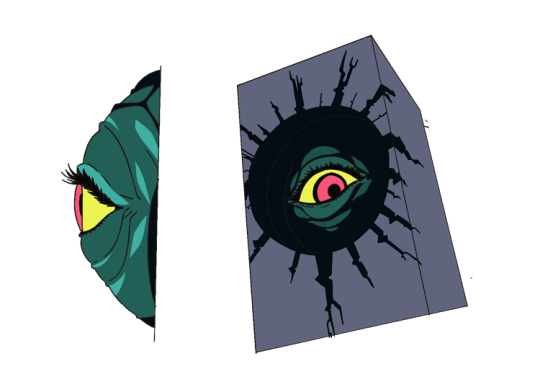
Later on, it's attributed and believed that Backbeard may have taken inspiration from several sources conglomerating together, though I could not find a source for the LIFE OF ME regarding the first one. TW for body horror and bugs below, but some people purport that Backbeard may have been based on the 'Eye Bugs' from the aforementioned magazine '100 Ghosts and Hauntings of the World,' though again, I have no idea where this picture comes from, and searching is turning up diddly squat. The second picture, though, I can attest to existing- a piece of art called the Shinjuku Phantom Chimera by Masatoshi Naitō.


Ironically, I pulled this from another blog! Special thanks as well to @littleeyesofpallas for this post about Bleach that ALSO goes into Backbeard. Finally, we can trace the inspiration for Backbeard and Shinjuku Phantom Chimera all the way back to the 1800's, wherein we have this painting by French artist Odilon Redon, simply called Eye Balloon.
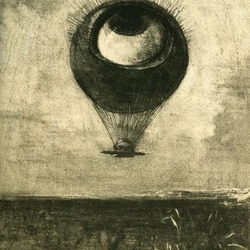
So, cool! What do I do with this? I have no idea! There isn't really a moral at the end of this, or any grand message, and my hours of digging have dealt me many, many headaches with not much else in return. I guess, at the very least, I satisfied my curiosity, and also found out that Bleach has a GeGeGe no Kitaro reference in it.
#shin megami tensei#smt#megaten#persona#daily#backbeard#gegege no kitaro#this was a pain in the ASS!!!#AHHHHH!!!!!
36 notes
·
View notes
Text
Because I am nothing if not predictable, here's the first chapter of my new Kaiser/Isagi/Ness historical yōkai AU fic! Yet more evidence that I cannot gain a new obsession without immediately picking a poly ship and making some of them yōkai.

I even drew fanart for my own AU. That's how strong the brainrot is! Help me nvm, I'm having fun so far
#blue lock#bllk#uhhh#kainessagi#isakainess#kaisaginess#is there one tag for this ship everyone agrees on#yoichi isagi#alexis ness#michael kaiser#toffi writes#toffi draws#toffi needs to sleep now because she once again insisted on finishing editing before bed and now it's way too late and she has work tomorro#i never learn
27 notes
·
View notes
Text
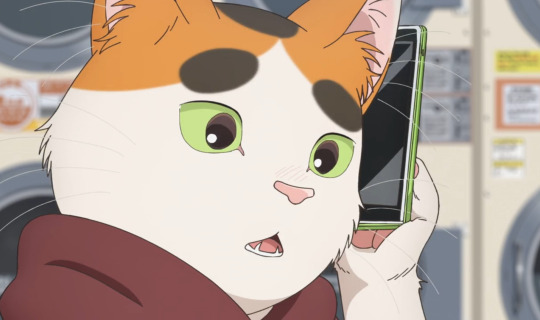
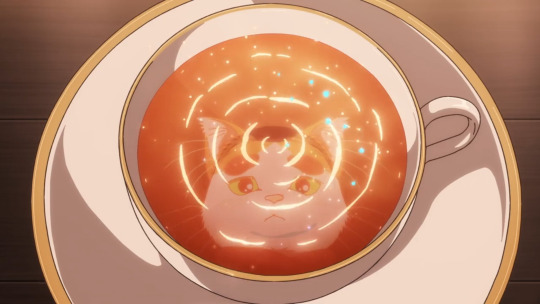
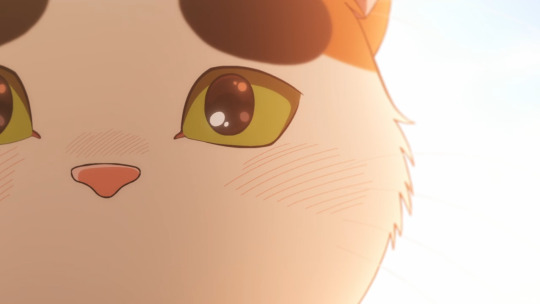
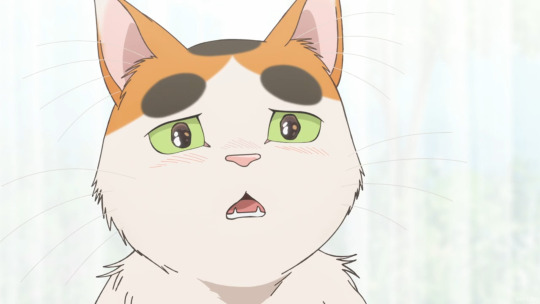
Tonari no Yokai-san - Episode 8
#Tonari no Yokai-san#yokai#animation#cat#anime#cats#cats in anime#kittens#anime cat#anime neko#cat in anime#neko#cats of tumblr#cute cats#kitty#kitties#pets#nekomata#Buchio#animals#となりの妖怪さん#The Yōkai Next to Me#Sakaki#black cat#anime art#anime and manga#cute animals#tea
36 notes
·
View notes
Text
Mokumokuren
Birds of different feathers flock together
Noticed online by head-hunting publishers, Mokumokuren hasn’t waited very long before polarising the attention of Japanese readers. With strange The Summer Hikaru Died, horrific bromance dealing with body dispossession, the mangaka signs a series of sophisticated oddity, that sets itself apart from the predictability of current fantasy productions.
Interview by Fausto Fasulo. Original translation: Aurélien Estager. English translation: “Keikotwins”. Bibliography: Marius Chapuis. Thanks: Camille Hospital & Clarisse Langlet (Pika), Yuta Nabatame, Mayuko Yamamoto & Mana Kukimoto (Kadokawa), Chiho Muramatsu (Tohan)
(T/N: Interview given to ATOM in winter 2023; 2 volumes were out in French.)
-
In an interview given to the CREA website in November 2022, you confided inventing stories since very young. Did your first fictions resemble the ones you draw nowadays?
It’s true that there are quite a lot of common points between the stories I imagined when I was a child and the ones I tell nowadays in my mangas. Especially a specific motif, that has been haunting me since the time when I wasn’t really aware of the world surrounding me: the presence amongst us of “non-human” beings, that nonetheless have a perfectly normal, ordinary appearance…
And how was this “obsession” born?
Precisely identifying the origins is complicated, my memories are too blurry, I think… What I can tell you is that I’ve always been fascinated by “creatures”. For example, I remember being very impressed by Peter Jackson’s bestiary in the Lord of the Rings trilogy. By the way, still in a fantasy register, I am also a big fan of Harry Potter adaptations… (She thinks.) And I’ve always liked yōkai stories, you know. I think that what I like in all these mythologies is the idea of species classification: each has its own characteristics – physical, biological – its own way to apprehend its environment.
In Japan, yōkai are integral part of regional folklore. Did the place you grew up in have some specific beliefs?
I was born and grew up in Tokyo, and, as you must know, yōkai are mostly associated with rural areas. I was thus never really bathed in this type of regional fantasy folklore. There are all kinds of yōkai and we can perhaps see in some more contemporary urban legends the echo of certain past beliefs? (She thinks.) I am a bit frustrated, because I believe that I could remember a legend that would have impacted me, but nothing comes to mind immediately, sorry!
You have already said so in an interview and it’s quite obvious when reading your work: you are a big amateur of horrific fiction. What has been your first contact with the genre, all medium included?
It was television that introduced me to horror: special shows, television films, series, I was watching these programs with a mix of fear and enthusiasm, a confused sensation that particularly delighted me! (She thinks.) And amongst all the aired shows, I will remember two titles: Hontō ni atta kowai hanashi and Kaidan shin mimibukuro*.
* Inspired by the homonymous manga magazine published by Asahi Shimbun, Hontō ni atta kowai hanashi (lit. “Scary stories that really happened”) is a series produced by Fuji Television that has been airing more or less weekly since 2004. Derived from literary material (a series of compilations of hundreds of short stories by Hirokatsu Kihara and Ichirō Nakayama, published from 1990 to 2005) Kaidan shin mimibukuro is a series made of several short movies depicting ghost stories based on real testimony.
Did you read horror mangas when you were young?
Let’s say that I was more interested in live-action productions. Nowadays, I obviously appreciate some horror manga authors, without pretending to be any expert in the subject. For example, I like Junji Itō’s work, but I am far from knowing it for a long time… (She thinks.) I could also talk about Shigeru Mizuki, who I also appreciate a lot.
The mechanics of fear aren’t the same in occidental and oriental fictions. You like American horrific productions – like Ari Aster movies – as much as ones from Japanese origin – you notably quote Ichi Sawamura novels and Kōji Shiraishi feature films. Can we say that you are tying these two perspectives with The Summer Hikaru Died?
My relationship with horror is more imbued with oriental sensitivity. But what I find remarkable in occidental horrific productions is work on image. In The Shining like in Ari Aster movies, for example, there is real research made on frame composition and choice of colours. I also try to follow this aesthetic reflection in my work as a mangaka.
In Ari Aster’s work, beyond the very precise staging, there is this permanent desire of ambiguity. Do you try to dig this same equivocal trench?
Absolutely. I try to tell complex feelings as well in The Summer Hikaru Died, like fear dyed with nostalgia or attachment, repulsion mixed with fascination, with attraction…
How do you “sort out” the shots that inspire you in cinema?
I don’t draw while freeze-framing during specific scenes. I would always rather watch a movie as a “focussed” spectator. However, I pay a lot of attention to the way the director composes their frame. I sometimes take some notes, but I most often simply keep it in a corner of my mind.
Could you tell us when and how the story and characters of The Summer Hikaru Died appeared to you? Have they matured a long time within you?
I’ve started thinking about this story when I was preparing university entrance exams. I was aspiring to join an art uni, and I was drawing every day. I can’t really say I made my characters “mature”: back then, I wasn’t thinking that the drawings I was making would one day end up being published, way less being serialised! I innocently created characters close to me, without guessing that one day they’d become manga protagonists.
One of your foundational reads was Sui Ishida’s Tokyo Ghoul manga. Can you tell us how you discovered it and what effect it had on you?
I don’t really remember how I discovered this series, but what I know is that I became crazy about it at first read. What I liked – and what I still like – is this idea of telling a story that confronts humans to these “different” beings while following the point of view of a character that represents alterity. Beyond this strictly dramatic aspect, Sui Ishida’s storyboarding and character design have had a strong impact on my work. However, I want to add that Tokyo Ghoul isn’t the only title I took inspiration from, I obviously have other references…
Do you do a lot of researches to define the design of your characters? You seem to draw them easily, in a very natural gesture…
I haven’t spent a long time defining my protagonists. First, there are few in the manga, then, they evolve in a rather realistic universe. My goal was rather simple: they had to look believable in the reader’s eyes. I wanted people to be able to imagine crossing them in the street, you see?
It’s after seeing illustrations posted on social media that depicted the future characters of The Summer Hikaru Died that the publishing department of the Young Ace Up magazine noticed you. How have you reacted when approached?
I was very surprised, because I absolutely wasn’t trying to become a mangaka. I would have never projected in such a future, you see. And, very honestly, if they hadn’t suggested working on this series, I don’t think I would ever had pushed the doors of a publishing house… I am then very thankful towards the persons who have allowed me to enter.
And what would you have done if you hadn’t been solicited?
Back when I’ve been contacted, I was considering – still vaguely – working in the video games field. But I wasn’t really proactive, I wasn’t contacting anyone, wasn’t sending resumes…
Did you want to do chara-design?
Why not, yes. What I like in video games is the range of possibilities they offer. You can then create an entire universe and this is rather exhilarating.
So you’re a gamer…
I have dropped my controller since I’ve started drawing manga. But yes, when I had more time, I played rather regularly, especially Nintendo productions…
Even if you play rather little nowadays, do video games influence your work?
I can’t say whether it really is an influence, but the Undertale game has left a big mark on me. I felt its creator’s strong will to surprise players, to make them feel unprecedented sensations…
Horror manga only relies on art and storyboard to provoke fear, whereas cinema and video games can also rely on sound. Is it from this observation that you have decided to particularly work on your sound effects?
Absolutely. I have thought a lot about the way to introduce and stage sound in The Summer Hikaru Died. The sound effects that you can find in the manga are indeed the result of this approach.
In an interview given to the Realsound website, you mention the use of the シャワシャワ (“shawa shawa”) sound effect. Knowing that occidental readers are way less sensitive to these graphicoustic details, can you explain its meaning?
“Shawa shawa” expresses the song cicadas make in western Japan. It’s a very special noise because in the different regions live different species that make specific sounds. So when I choose this specific sound effect, I convey a geographic and temporal piece of information to the reader, who can then guess the location and season the action takes place in. (She thinks.) When using this sound – that we especially find in the beginning of the manga – my goal was to play with silence, particularly when the song stops. I thus had the idea of representing this sound effect with an easily readable font, so the reader would make no effort to decipher it, as if the sound was asserting itself naturally, you see? I hoped to suggest a saturation they couldn’t avoid and that, when it’d stop, would immerse them in absolute silence.
The Summer Hikaru Died transcribes very well this particular atmosphere of Japanese summers…
Yes, I really wanted to signify this languor in my manga. And the cicadas’ song we discussed earlier contributes to creating this atmosphere: it’s an overwhelming sound, sometimes irritating, you cannot escape from in summer – Japanese readers obviously know what I’m talking about. (She thinks.) I also gave special attention to shadows: summer light being very bright, shadows are very sharp, very deep.
Do digital tools allow you to get this result more efficiently than traditional?
I work on Clip Studio Paint, and it’s true that it sometimes allow me to save time. Consider the work on shadows: I never apply solid black because I like saturating space with hatches and, with digital tools, I can obtain the desired result faster because I can duplicate each of my lines.
Your use of hatches is sometimes reminiscent of Shūzō Oshimi’s…
I don’t know his mangas very well, but it’s funny that you mention him because I recently read his latest series, Okaeri Alice. In any case, I really like his style and I perfectly understand how you can bring his universe and mine together.
The Summer Hikaru Died relies on the concept of body dispossession, that obviously takes back to the Body Snatcher novel by Jack Finney and its movie adaptations. Did you think about it?
I don’t know this book very well, but I know its theme has been approached often, especially in movies. As I was saying at the beginning of this interview, my idea was to adopt the point of view of a non-human and tell his indecision, his moral questions…
We also find this idea in Hitoshi Iwaaki’s Parasite…
I haven’t read the manga fully, but I’ve watched the anime adaptation that was released a few years ago (R/N: in 2014). I remember rather liking it, even if I think I offer something different with The Summer Hikaru Died. What interests me is sounding the inwardness of my non-human character out and expose all his dilemmas. What is his place amongst men? Is he legitimate in our world? Here is the type of questions that pushed me.
One of the impacting scenes of volume 1 of The Summer Hikaru Died is the one when Yoshiki penetrated Hikaru’s body by shoving his arm into his torso. It’s a sequence that is both very sensuaI – to not say sexuaI – and also very horrific. How did you get this idea?
I wanted to put the readers in an uncomfortable position. A stressful situation that could take several forms because, according to your sensitivity, you can feel very different emotions in front of this scene: sexuaI arousaI, fear or disgust. For me, it was supposed to put the reader in some kind of catatonia, you see?
Do you chat a lot with your tantō, especially around these slightly “complicated” scenes?
I have free rein, you know, I can draw everything I want. My editorial supervisor has never asked me to temper some sexuaIIy connotated parts. My discussions with him don’t revolve around this kind of things, but rather around the structure of the scenario itself: where to place this scene in the narration? Is it better to put this sequence before this other one? Nowadays, I am more at ease with all the scripting layout but, at the beginning, I needed support.
What allows you to get, from a dramatic point of view, the mix between bromance and horror?
I wanted to show the differences in sensitivities and values between a human being and an “other than human”, and tell the misunderstandings this can cause when both meet. When Yoshiki “scratches” under the appearance of the one who is supposed to be his best friend, it creates a first point of conflict in the story. I then hoped to make his relationship with Hikaru – or rather with the “entity” that pretends to embody him – a kind of undefinable bond, that wouldn’t be friendship, nor love.
Do you know today where this strange relationship between your two heroes will lead you?
I know more or less how all of this will evolve, yes. I have decided on my story’s general plot since the beginning. I can only tell you that The Summer Hikaru Died won’t be a long series.
How do you explain the almost instant public plebiscite of your series in Japan? You perhaps cannot have perspective on it but, in a saturated publishing landscape, you have managed to stand out…
Hm… Indeed, I don’t really have precise explanations to give you about this success. Maybe the covers’ design has been in favour of the manga? I asked the person in charge of graphics to make sure that the visuals would be noticeable in bookstores. That’s why the books have this monochrome aspect, with the title discreetly placed. I didn’t want obvious advertisement banners, but something simple, like this blue background for the first volume, on which the character stands out. I also wished to create contrast between the jacket’s and the inner cover’s drawings. I thus had requirements that didn’t quite go alongside what we can nowadays see on the shelves of Japanese bookstores.
#the summer hikaru died#hikaru ga shinda natsu#/long post#I'm not a native eng speaker so excuse mistakes!#the fr version has fancy words that I simplified for the eng translation#Feel free to ask any question!#The og article had manga illustrations with funny comments as legends + a short analysis of the manga's narration that I didn't include#The og title was 'Qui se dissemble s'assemble'#which is a play of words saying the opposite of idiom 'Qui se ressemble s'assemble' lit 'who look alike go together'#so I went for a silly equivalent lmao
54 notes
·
View notes
Text


Ashura/Asura (George Akiyama) 1971
#Reading this in my quest to read lots of “Supernatural Yōkai” manga#Pretty old like Ozamu Tezuka's Dororo but super dark cause of it's themes#ashura#asura#george akiyama#retro manga#yokai#oni#supernatural manga#horror japan#japanese comics#manga
2 notes
·
View notes
Text
The Todorokis, how they are called and how they call others - Part 1 (Chap. 1-21 & Ep. 1-13)
So I've already an "How the Todorokis call each other" series in 4 parts. This is a little different as in this I'll go though the manga in chronological order and look at how the Todorokis call each others, the other people and how they're called back.
This means you'll find bits of the past series, but also new bits about how others refer to them or how they refer to others. Mind you, I won't, for example, report all the times All Might calls Shōto 'Todoroki Shōnen' but, since this is how he usually calls him I'll report the first time he does it and then I'll add if he'll call him something different.
With this said let's start.
INTRODUCTIONS DONE BY THE NARRATOR
TODOROKI ENJI
Midoriya Izuku ‘Jiken kaiketsu-sū shijō saita! Nenshō-kei HERO “ENDEAVOR”‼’
緑谷出久「事件解決数史上最多!燃焼系ヒーロー『エンデヴァー』‼」
Midoriya Izuku “The person who solved the most cases in history! The burning hero “Endeavor”!” [Chap. 3/Ep. 4]

In the manga we don't know who's the narrator but in the anime it's Midoriya.
Enji is called ‘Nenshō-kei HERO “ENDEAVOR”’ (燃焼系ヒーロー『エンデヴァー』 “The burning hero “Endeavor””) instead than Flame Hero Endeavor, probably because Horikoshi hadn't decided to call him as such yet.
TODOROKI SHŌTO
We've two versions for Shōto's introduction, one from the manga and the other from the anime.
PRESENT MIC ‘Suisen nyūgaku-sha 2! Todoroki Shōto. Kosei: “hanrei hannen”! Migi de kōrashi hidari de moyasu! Hani mo ondo mo michisū‼ Bakemono ka yo‼’
プレゼント・マイク『推薦入学者2!轟焦凍。個性:“半冷半熱”!右で凍らし左で燃やす!範囲も温度も未知数‼化け物かよ‼』
Present Mic “Recommended student number 2! Todoroki Shōto. Quirk: "Half cold, half hot"! Freezes with the right and burns with the left! Range and temperature unknown! Is he a monster?” [Chap. 11]
PRESENT MIC ‘Todoroki Shōto. Koitsu mo HERO-ka no suisen nyūgaku-sha 4-nin no uchi hitori. Kosei “hanrei hannen”. Migi de kōrashi hidari de moyasu. Hani mo ondo mo michisū. Bakemono ka yo!’
プレゼント・マイク『轟焦凍。こいつもヒーロー科の推薦入学者4人のうち一人。個性“半冷半熱”。右で凍らし左で燃やす。範囲も温度も未知数。化け物かよ!』
Present Mic “Todoroki Shōto. He’s one of the four recommended students for the Hero Course. His quirk is ‘half cold, half hot’. He freezes with his right hand and burns with his left. The range and temperature are unknown. He’s a monster!” [Ep. 8]

In the manga we don't know who's the narrator but in the anime it's Present Mic.
Shōto is called ‘Suisen nyūgaku-sha’ (推薦入学者 “Recommended student”) which is how you call a student who received a recommendation from his previous school.
He's also called ‘Bakemono’ (化け物 “monster” Lit. “transforming thing”). A bakemono is a class of yōkai (妖怪 "strange apparition") in Japanese folklore. Literally, the terms mean a thing that changes, referring to a state of transformation or shapeshifting, therefore it's used to refer to living things or supernatural beings who have taken on a temporary transformation. Here it's clearly used not with the intent to insult Shōto but to imply Shōto is too amazing to be human.
HOW THE TODOROKIS CALL THEMSELVES
TODOROKI SHŌTO
Ore (俺/おれ Lit. “Oneself”) This term is the most casual form of self-address used by men, which establishes a sense of masculinity. It can be seen as rude, depending on the context, as it’s suitable for conversations among close friends or relatives but not in polite conversation. It emphasizes one’s own status when used with peers and with those who are younger or of lesser status. Among close friends or family, its use conveys familiarity rather than masculinity or superiority. It was used by both genders until the late Edo period and still is in some dialects. [Chap. 11/Ep. 8]

Kodomo (子ども “child”) He refers to himself as one when facing and easily defeating the Villains. [Chap 14/Ep. 10]

PLURAL
-tachi (達/たち) is very common, pretty neutral in terms of formality and it’s super flexible to the point you can add it to pronouns, people’s names, and even non-human things that you want to personify. [Chap. 16/Ep. 11]

HOW TODOROKI SHŌTO CALL OTHERS
VILLAINS:
YATSU (ヤツ “guy/bastard”) Tecnically 'yatsu’ means “guy” but the nuance here is that you’re either using for someone you’re close to, therefore in a familiar way, or it comes out as derogatory. When Shōto calls Villains 'yatsu' he's clearly being derogatory. [Chap. 12/Ep. 10]

Baka (馬鹿/ばか/バカ “stupid” lit. “horse deer”) According to the region it might feel more or less insulting than 'aho' (阿呆/あは/アホ “fool”). Regardless of all this, in the story it's used to imply someone is “being an idiot/lacking intelligence”, where 'aho' is used to imply “they're doing something in a foolish manner”. Generally it’s written in katakana, to also convey how the speaker is really angry and can be used with or without a noun after it. Another common way to write it is in hiragana and writing it in kanji is being considered more a literature way to write it. [Chap. 12/Ep. 10]

Otona (大人 “adult”) While it's normally not an insult in the context it's clearly meant to be. [Chap 14/Ep. 10]

Anta (あんた/アンタ) Contraction of ‘anata’ is also generally not used as it’s considered too direct. Can express contempt, anger or familiarity towards a person. [Chap. 16/Ep. 11]
‘Kosei’ o mote amashita yakara (〝個性〟を持て余した輩 “people who don’t know what to do with their ‘quirks’”) [Chap. 16/Ep. 11]

Seiei (精鋭 “elite troops”) [Chap. 16/Ep. 11]
Koma (コマ/こま/ 駒 “piece”): A 'koma’ is how you call a piece in shōgi or chess… but, of course, figuratively, it’s also how you call someone’s puppet. [Chap. 16/Ep. 11]
CHINPIRA (チンピラ “thug”) [Chap. 16/Ep. 11]

Temē/TemeE (てめえ/てめエ/手前 Lit. “the one in front of my hand”) 'Temē’, a reduction of 'temae’, is, according to some, the rudest way to say “you” even more rude than ‘Kisama’ and it’s used when the speaker is very angry. It’s the sort of thing you might translate with “son of a b*tch” or some other insult along the line. [Chap. 18/Ep. 12]

-ra (等/ち) is reasonably neutral and flexible in terms of formality, but it’s more on the casual side compared to ‘-tachi’, so it’s often associated with friendliness and/or disrespect. Here it's clearly meant to be disrespectful. [Chap. 16/Ep. 11]

ALL MIGHT:
ALL MIGHT (オールマイト) [Chap. 16/Ep. 11]

Heiwa no shōchō (平和の象徴 “symbol of peace”) [Chap. 19/Ep. 12]

TOP (トップ “the top”) [Chap. 19/Ep. 12]

CLASSMATES:
Shōto calls all of them by surname only.
Midoriya (緑谷) [Chap. 20/Ep. 13]

HOW THE OTHERS CALL THE TODOROKIS
TODOROKI SHŌTO IS CALLED:
BAKUGŌ KATSUKI:
Kōri no yatsu (氷の奴 “ice bastard”) It's an one time thing only as Bakugō will switch to another nick for Shōto. [Chap. 11/Ep. 8]

KIRISHIMA EIJIRŌ:
Same as Shōto, Kirishima calls all his classmates by surname only.
Todoroki (轟) [Chap. 13/Ep. 9]

HAGAKURE TŌRU:
Hagakure calls all her classmates by surname + -kun.
Todoroki-kun (轟くん “young Todoroki”) [Chap.21/Ep. 13]

ALL MIGHT:
All Might calls all his students by surname + shōnen.
Todoroki shōnen (轟少年 “Todoroki boy/young Todoroki”) [Chap. 19/Ep. 12]

VILLAIN:
Koitsu (こいつ “this person”) it's a very impolite expression that’s used to refer to “this person.” Although some people may refer to a friend as such, this is usually only if they have an intimate and casual relationship with them. [Chap.16/Ep. 11]
GAKI (ガキ “brat”) It's either used for unruly children or to just be rude with them. [Chap.16/Ep. 11]

KUROGIRI:
Kodomo (子ども/子供 “child”) [Chap. 20/Ep. 13]

EXTRA - HOW THE TODOROKIS DESCRIBES OTHERS AND HOW OTHERS DESCRIBE THEM
TODOROKI SHŌTO ABOUT BAKUGŌ KATSUKI
Todoroki Shōto ‘Mekura mashi o kaneta bakuha de kidō henkō, soshite, sokuza ni mō ikkai… Kangaeru TYPE ni wa mienee ga, igaito sensai da na.’
轟焦凍「目眩ましを兼ねた爆破で軌道変更、そして、即座にもう一回…考えるタイプには見えねぇが、意外と繊細だな。」
Todoroki Shōto “He changed the trajectory with an explosion that also served as a blinding blow, and then he did it again instantly… He doesn’t seem like the type to think things through, but he’s surprisingly sensitive.” [Chap. 10/Ep. 7]
TODOROKI SHŌTO ABOUT OJIRO MASHIRAO AND HAGAKURE TŌRU
Todoroki Shōto ‘Warukatta na, LEVEL ga chigai sugita.’
轟焦凍「悪かったな、レベルが違いすぎた。」
Todoroki Shōto “Sorry, our levels are too different.” [Chap. 11/Ep. 8]
TODOROKI SHŌTO ABOUT THE VILLAINS ATTACKING THEM AT USJ
Todoroki Shōto ‘Arawareta no wa koko dake ka gakkō zentai ka… nanni seyo SENSOR ga hannō shineenara, mukō ni sō iu koto dekiru “kosei” (read: YATSU) ga irutte koto da na. Kōsha to hanareta kakuri kūkan, soko ni shōninzū (read: CLASS) ga hairu jikanwari… BAKA da ga AHO ja nee. Kore wa nanrakano mokuteki ga atte yōi shūtō ni kakusaku sa reta kishūda.’
轟焦凍「現れたのはここだけか学校全体か…何にせよセンサーが反応しねぇなら、向こうにそういうこと出来る〝個性〟(ヤツ)がいるってことだな。校舎と離れた隔離空間、そこに少人数(クラス)が入る時間割…バカだがアホじゃねぇ。これは何らかの目的があって用意周到に画策された奇襲だ。」
Todoroki Shōto “Are they just here, or in the whole school? Either way, if the sensors aren’t reacting, then that means there’s a 'quirk' (read: guy/bastard) over there that can do that. An isolated space away from the school building, and a timetable with a small number of students (read: classes) in it. They’re stupid, but not foolish. This was a deliberate and well-planned surprise attack with some kind of purpose.” [Chap. 14/Ep. 10]
Todoroki Shōto ‘Chirashite korosu… ka? Itcha warui ga, anta-ra dō mite mo “‘kosei’ o mote amashita yakara” ijō ni wa miuke rarenee yo.’
轟焦凍「散らして殺す…か?言っちゃ悪いが、あんたらどう見ても『〝個性〟を持て余した輩』以上には見受けられねぇよ。」
Todoroki Shōto “Scatter and kill them…huh? I hate to say it, but no matter how I look at you guys, you just don’t seem like anything more than ‘people who don’t know what to do with their “quirks”’.” [Chap. 16/Ep. 11]
BAKUGŌ KATSUKI ABOUT TODOROKI SHŌTO
Bakugō Katsuki ‘Kōri no yatsu mite~tsu! Kanawanē n jatte omotchimatta...!!’
爆豪勝己「氷の奴見てっ!敵わねえんじゃって思っちまった...‼」
Bakugō Katsuki “Look at that ice bastard! I thought there was no way I could beat him...!!” [Chap. 11/Ep. 8]
KIRISHIMA EIJIRŌ ABOUT TODOROKI SHŌTO
Kirishima Eijirō ‘Hade de tsuēttsuttara yappa Todoroki to Bakugō da na.’
切島鋭児郎「派手で強えっつったらやっぱ轟と爆豪だな。」
Kirishima Eijirō “Flashy and strong, it’s definitely Todoroki and Bakugō.” [Chap. 13/Ep. 9]
ALL MIGHT ABOUT TODOROKI SHŌTO
ALL MIGHT ’Hyōketsu…!! (Todoroki shōnen ka!!Watashi ga kōranai GIRIGIRI no hani o umaku chōsei shite…!! Okage de! Te ga yurunda!!!)’
オールマイト「氷結…!!(轟少年か!!私が凍らないギリギリの範囲をうまく調整して…!!おかげで!手が緩んだ!!!)」
All Might “Freezing…! It’s young Todoroki!! He managed to fine-tune the limit of where I wouldn’t freeze… Thanks to that, his hand loosened!!!)” [Chap. 19/Ep. 12]
Todoroki Shōto ’……Sakki no wa ore ga SUPPORT hairanakerya yabakatta deshou.’
轟焦凍「……さっきのは俺がサポート入らなけりゃやばかったでしょう。」
Todoroki Shōto “…That last one would have been terrible if I hadn’t supported you.”
ALL MIGHT 'Sore wa soreda, Todoroki shōnen!! Arigato na!! Shikashi daijōbu!! PRO no honki o mite i nasai!!’
オールマイト「それはそれだ、轟少年!!ありがとな!!しかし大丈夫!!プロの本気を見ていなさい!!」
All Might “That’s true, young Todoroki!! Thanks!! But it’ll be fine!! Just watch as I get serious as a pro!!” [Chap. 19/Ep. 12]
That's all for this part.
#boku no hero academia#Todoroki Enji#Todoroki Shouto#Midoriya Izuku#Bakugou Katsuki#Toshinori Yagi#Kirishima Eijirou#Hagakure Tooru#Ojiro Mashirao#Kurogiri#bnha observations
17 notes
·
View notes
Text

Bake-Kujira
The Bake-kujira is probably my favorite cryptid so far. It’s the reanimated skeleton of a whale, accompanied by strange birds and fish, that gets revenge against people who hunt whales or eat whale meat. How does this yōkai exact its revenge? By cursing these people with fire, famine, plagues, and other types of devastation! Exciting.
This skeleton whale typically appears on rainy nights off the coast of western Japanese whaling villages. In the past, a whale sighting was thought to be a blessing, as poor villages would harvest the meat and oil from their catch. However, this came at a price, according to the fisherman. They claimed that these whales lived on as a Bake-kujira, seeking revenge against the human who killed them.
Fishermen aren’t the only ones who should fear this creature, as manga artist Mizuki Shigeru claims. According to him, he came down with a terrible fever while working on a story about the Bake-kujira. In the story, a man became a Daikaiju, or a giant bipedal whale with hairs up to two-hundred meters in height. He did this by eating a lot of whale meat. The artist said that the fever would stop when he stopped working on the story, and refers to it as “The Curse of the Bake-Kujira”.
#nox hawthorne#artist#artists on tumblr#art#writers on tumblr#writer#writeblr#writing#artwork#creature feature friday#cryptids#bake-kujira
15 notes
·
View notes